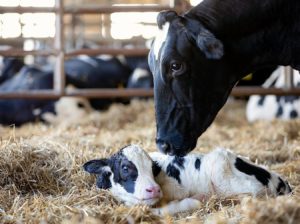The survival of replacement calves and heifers, the subsequent survival of lactating dairy cows in each lactation and the efficient conversion of feed into milk, all contribute to the environmental impact of dairy production. In recent years, early life nutrition of the calf has been recognised as having long lasting effects on health and productivity throughout the lifetime of the animal.
Elevating the level of nutrition supplied to young calves, by increasing nutrient supply via the milk feed, is associated with beneficial effects on growth and future lactation performance. LifeStart by Trouw Nutrition was introduced in 2014. The science-based programme has focused on the critical first months of a dairy calf’s life. The programme has aimed to increase, improve and communicate knowledge on all areas of early life nutrition including milk quantity, milk quality as well as practical feeding considerations. 
Over the last few years the LifeStart research group, alongside collaborators including Cornell University, has investigated growth, metabolism and lactation performance of calves fed two different levels of milk preweaning – elevated and restricted levels. After weaning all animals were reared together and later entered the dairy herd.
As anticipated calves fed an elevated level of milk replacer preweaning had a higher average daily gain, resulting in a weight difference at weaning. This body weight advantage remained until insemination, resulting in lower age at first service and a higher conception rate. The number of services required was also reduced. This trend continued into the first and second lactation, where improvements in first service conception rate were found. During the first and second lactation, cows that were fed the elevated level of nutrition preweaning, yielded more fat and protein corrected milk, consumed more forage and maintained a lower body condition score. In addition to this the survival rate until 4th calving was significantly improved.
At specific time points throughout the trial blood samples were analysed in order to investigate any potential differences in metabolism between the two groups. Samples were taken at day 2, 49, 330 days of age and at 60 days in milk during the first lactation, blood samples were taken and analysed for over 900 blood metabolites. Analysis shows that multiple pathways which were affected by elevating preweaning nutrition, and that these differences were still expressed differently in the first lactation. These differences in long lasting metabolic configuration, can potentially explain the differences observed in performance and survival which were described in the study.
LifeStart Science by Trouw Nutrition continues to push the boundaries of calf nutrition research in order to support farmers with products and practical solutions to optimise calf and heifer performance. On farm examples demonstrate clear long-term benefits on fertility, survivability and lactation performance providing a clear return on investment. Investing in calf nutrition is an investment for the future herd.
For further advice on your youngstock, get in touch with your NWF Sales Specialist or call our Youngstock team HERE.
Thank you to Trouw Nutrition GB for their contribution.
